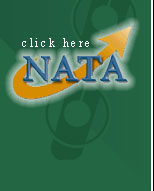|
PRACTICAL
SIGNIFICANCE
Acutely
concussed
collegiate
athletes
demonstrate
motor
command
transmission
differences
(via
motor-evoked
potentials)
compared
to
non-concussed
athletes
over 1
to 10
days
post-head
injury.
STUDY
BACKGROUND
The
assessment
of
sport-related
concussions
is
currently
based on
self-reported
symptoms,
neurological
examination,
and
neurocognitive
testing.
Direct
objective
assessment
of the
physiologic
integrity
of
cortical
pathways
via
transcranial
magnetic
stimulation
(TMS) of
evoked
motor
potentials
(MEPs)
may
provide
more
meaningful
neuroanatomic
and
neurophysiologic
assessment
of the
severity
of
concussion.
The
ability
to
accurately
assess
the
physiologic
integrity
of the
cerebral
cortex
and
motor
pathways
through
TMS-MEP
techniques
among
acutely
concussed
athletes
has not
been
examined.
The
information
gained
from
evaluating
MEPs in
subjects
with
sports-related
concussions
would
provide
direct
evidence
for the
pathophysiologic
processes
associated
with
mild
traumatic
brain
injury.
OBJECTIVE
To
determine
if MEPs
are
different
between
acutely
concussed
and
non-concussed
athletes.
DESIGN
AND
SETTING
A
matched-cohort,
time-series
design
was used
with
testing
conducted
in a
collegiate
athletic
training
facility.
SUBJECTS
Eighteen
collegiate
athletes
(12
males, 6
females,
age 20.4
± 1.3
years,
height
177.6 ±
7.1 cm,
mass
78.0 ±
7.1 kg)
participated
in this
study.
Specifically,
nine
subjects
with
acute
concussions
( less
than 24
hours
since
time of
injury)
were
matched
to 9
control
subjects.
MEASUREMENTS
Transcranial
magnetic
stimulation
was
applied
over the
motor
cortex
with
MEPs
recorded
from
bilateral
upper
limbs.
Testing
was done
1, 3, 5,
and 10
days
post-concussion.
MEP
thresholds
(%),
latencies
(msec/m),
and
amplitudes
(MEP:Mmax
ratio)
were
assessed
in all
subjects.
Central
motor
conduction
time (CMCT)
was
calculated
from MEP,
M
response,
and F
wave
latencies.
RESULTS
Adjusted
median
MEP
latencies
were
significantly
different
between
testing
days
(F3,24 =
4.1,
P=0.02)
with
longer
latencies
noted on
days 5
(26.5
±0.47msec/m)
and 10
(27.1 ±
0.48)
compared
to days
1 (25.7
± 0.49)
and 3
(25.5 ±
0.5).
Lower
thresholds
were
smaller
on days
1 and 3
compared
to days
5 and 10
(F3,48 =
0.36,
P=0.02).
Ulnar
MEP
amplitudes
were
smaller
on day 3
(F3,48 =
8.78,
P=0.001)
compared
to days
1, 5 and
10.
CONCLUSIONS
Acutely
concussed
collegiate
athletes
demonstrate
MEP
changes
over a
span of
1-10
days
post-injury,
providing
direct
electrophysiologic
evidence
for the
acute
effects
of
concussion.
| |
 |
|
| |
Figure
1.
Demonstration
of the
application
of
transcranial
magnetic
stimulation
to
elicit a
motor
evoked
potential. |
|

|
Publication
and
Presentation
List:
-
Livingston
SC,
Ingersoll
CD.
Reliability
of
motor
evoked
potentials
obtained
using
a
transcranial
magnetic
stimulation
technique
in
non-concussed
subjects.International
Journal
of
Neuroscience
2006.
(In
Press).
-
Livingston
SC,
Ingersoll
CD.
“MEP
Amplitudes
Induced
by
Transcranial
Magnetic
Stimulation
are
Reduced
in
the
Acutely
Concussed
Collegiate
Athlete”.
Society
for
Neuroscience
Annual
Meeting.
2006.
Atlanta,
GA.
|
|

Scott C. Livingston, PhD, PT, ATC, SCS
Principal Investigator |
|
Scott C. Livingston, PhD, PT, ATC, SCS received his Doctor of Philosophy degree in Kinesiology (with an emphasis in Sports Medicine) from the University of Virginia in 2006. Dr. Livingston is currently a member of the Physical Therapy faculty at George Washington University and has over 18 years of clinical practice experience in orthopaedic and musculoskeletal physical therapy. His research interests include: pathophysiology of mild traumatic brain injury among athletes, neuropsychological assessment of the concussed athlete, transcranial magnetic stimulation, and electrotherapy. |
| |
Scott C. Livingston, PhD, PT, ATC, SCS
George Washington University
900 23rd Street NW GWUMC Suite 6138
Washington, DC 20037-2342
Phone: (202) 994-9278
Fax: (202) 994-8400
hspscl@gwumc.edu |
|
|
This
Grant
Information
Summary
may be
downloaded
in a
2-page
pdf file
from
http://www.natafoundation.org/pdfs/07Livingston.pdf . |
Back to
December 19, 2007
eBlast
Newsletter
Send e-mail
to johno@nata.org with questions
or
comments
about this web site. |


